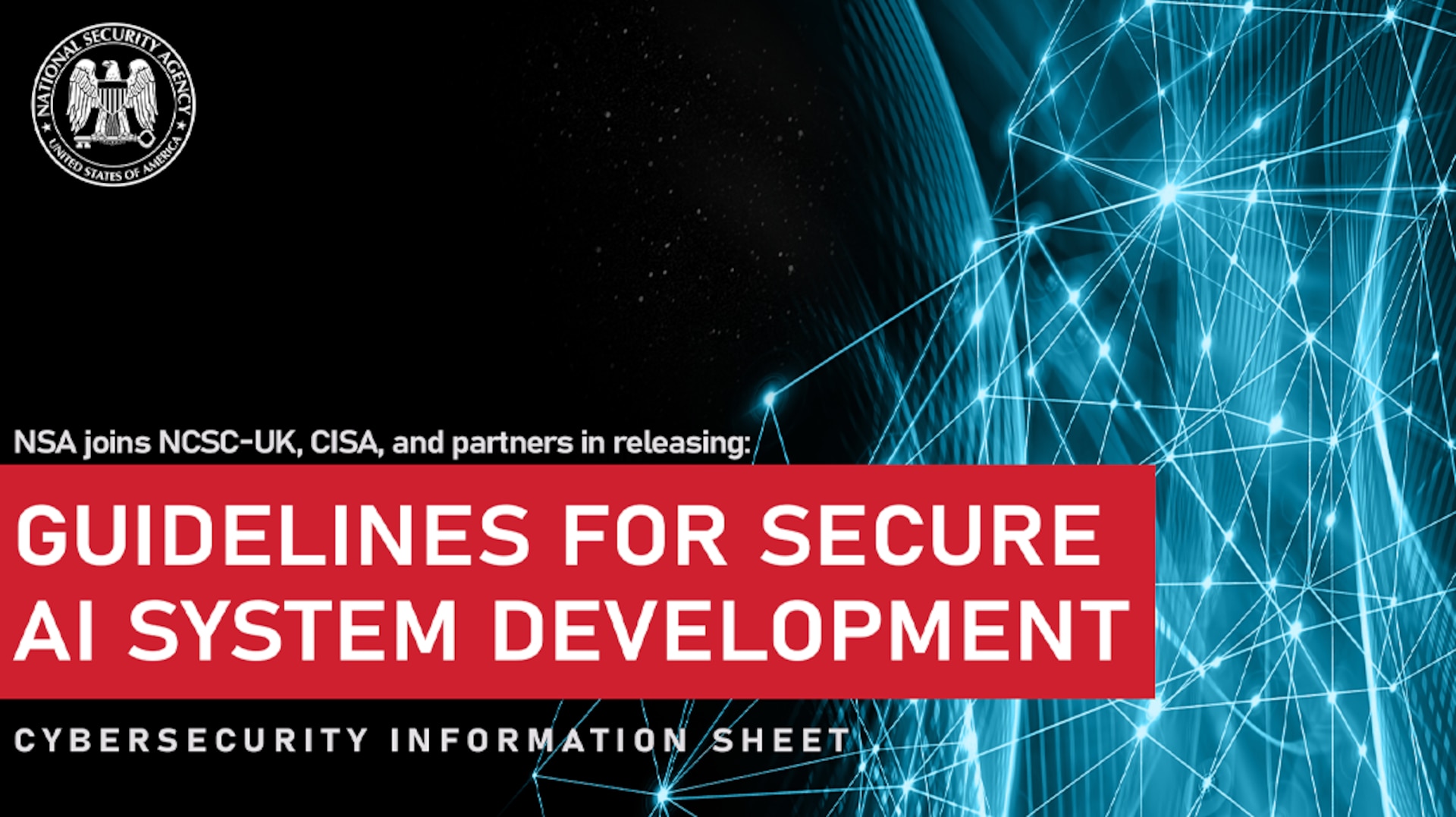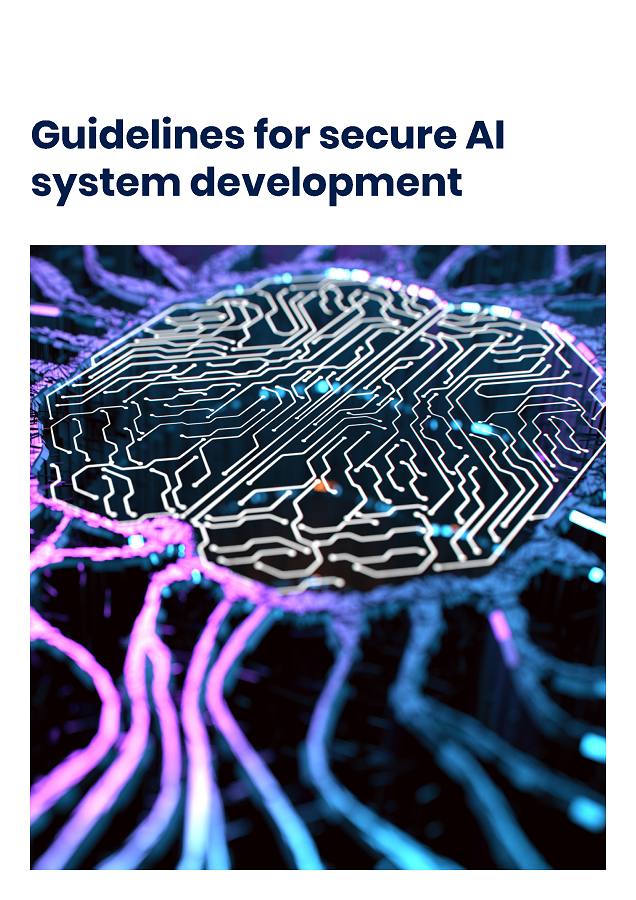In today’s increasingly connected world, the intersection of artificial intelligence (AI) and cybersecurity has become a critical area of concern. With the rapid advancement of AI technology, organizations are leveraging its capabilities to enhance their cybersecurity measures. However, as AI evolves, so do the threats it faces. It is crucial for developers to follow guidelines for secure AI system development to ensure the protection and integrity of sensitive data.
AI and Cybersecurity: Guidelines for Secure AI System Development encompass a range of important aspects. From understanding the historical context of AI development to implementing robust security measures, these guidelines provide a comprehensive framework for safeguarding AI systems. According to recent studies, AI can detect cybersecurity threats with an accuracy rate of up to 99.9%. By integrating AI algorithms into security systems, organizations can effectively mitigate cyber risks and respond to emerging threats in real-time. Emphasizing secure AI development practices is essential to stay ahead in the ever-evolving digital landscape.


Introduction to AI and Cybersecurity
Artificial Intelligence (AI) has revolutionized various industries, including cybersecurity. As organizations increasingly rely on AI systems to detect and respond to cyber threats, it becomes crucial to ensure the security of these AI systems themselves. AI and cybersecurity are interconnected, with AI being both a tool to enhance cybersecurity and a potential vulnerability if not properly secured. In this article, we will explore the guidelines for developing secure AI systems in the context of cybersecurity.
When discussing secure AI system development, it’s important to address the potential risks and challenges involved. While AI can greatly improve cybersecurity capabilities, it also presents new attack vectors that malicious actors can exploit. Understanding the nuances of AI and its relationship with cybersecurity is crucial for building robust and secure AI systems.
One of the key aspects to consider in secure AI system development is the need to implement robust security measures at every stage of the AI system’s life cycle. From data collection and model training to deployment and ongoing monitoring, organizations must prioritize security to mitigate potential vulnerabilities and protect against evolving cyber threats.
The Role of AI in Enhancing Cybersecurity
AI has become an invaluable tool in the field of cybersecurity, enabling organizations to detect and respond to threats with greater accuracy and speed. With the vast amount of data generated daily, AI algorithms can analyze and identify patterns in real-time, significantly enhancing the ability to detect and respond to cyber threats.
Machine learning, a subset of AI, plays a crucial role in cybersecurity. By training AI models on large datasets, organizations can develop algorithms that can automatically identify and classify various types of cyber threats, including malware, phishing attempts, and unauthorized access attempts. This proactive approach to cybersecurity enables organizations to stay one step ahead of attackers.
AI-powered cybersecurity systems can also automate repetitive tasks, such as monitoring and analyzing network traffic, freeing up security professionals to focus on more complex and strategic initiatives. By leveraging AI for routine tasks, organizations can optimize their security operations and respond faster to potential threats.
Ensuring the Security of AI Systems
While AI has tremendous potential to enhance cybersecurity, it also presents unique security challenges. Adversarial attacks, for example, involve modifying input data in a way that AI systems make incorrect predictions or decisions. These attacks can be particularly damaging in the context of cybersecurity, as they can lead to false negatives or positives, allowing malicious activities to go undetected or triggering unnecessary alarms.
Therefore, it is essential to implement security mechanisms that protect AI systems from adversarial attacks. This includes robust testing and validation procedures to identify potential vulnerabilities in AI models. By simulating different attack scenarios, organizations can identify weaknesses and take measures to strengthen the security of their AI systems.
Data privacy is another critical aspect to consider in the context of AI and cybersecurity. Organizations must comply with privacy regulations and ensure the confidentiality and integrity of data used for AI model training and operation. By implementing strong data encryption and access controls, organizations can minimize the risk of data breaches and unauthorized access to sensitive information.
In addition to securing the AI systems themselves, organizations must also address the security of the infrastructure and platforms that support AI operations. This includes securing the cloud environment where AI models are hosted and implementing appropriate access controls to protect against unauthorized access or tampering.
Guidelines for Secure AI System Development
Developing secure AI systems requires a comprehensive approach that considers both the technical and non-technical aspects of cybersecurity. Here are some guidelines to follow when developing AI systems:
1. Secure Data Collection and Management
Secure AI system development begins with ensuring the security and privacy of the data used for training and operations. Organizations should implement proper data collection practices, ensuring that data is obtained from reliable sources and is free from biases or malicious intent.
Data storage and management should also be secure, with appropriate access controls and encryption mechanisms in place. Regular backups and disaster recovery plans should be established to ensure data availability and minimize the impact of potential data breaches.
Organizations must also comply with relevant privacy regulations and industry best practices to protect personal and sensitive information. This includes obtaining informed consent for data collection and implementing anonymization techniques where applicable.
2. Robust Model Training and Validation
When training AI models, organizations should implement robust validation processes to detect and address potential vulnerabilities. This includes testing models with diverse datasets and verifying their performance against various attack scenarios.
Implementing adversarial training, where AI models are exposed to potential attack scenarios during the training process, can help improve the resilience of the models against adversarial attacks. Regular retraining and updating of models based on new threat intelligence are also crucial to maintain the effectiveness of the AI systems over time.
Transparency is another important factor in model training and validation. Organizations should document and communicate the limitations and potential risks associated with their AI systems to ensure that stakeholders have a clear understanding of the system’s capabilities and potential vulnerabilities.
3. Secure AI Model Deployment
When deploying AI models, organizations should ensure that the deployment environment is secure and properly configured. This includes implementing access controls, regularly updating software and firmware, and monitoring the system for any suspicious activities or anomalies.
Secure communication protocols should be used to transmit data between the AI model and other systems or devices. Encryption and secure authentication mechanisms should be implemented to protect sensitive data and prevent unauthorized access.
Regular vulnerability assessments and penetration testing should be conducted to identify and address any vulnerabilities or weaknesses in the deployed AI systems. Patch management processes should be established to ensure that any security patches or updates are promptly applied to mitigate emerging threats.
4. Ongoing Monitoring and Maintenance
Once the AI system is deployed, ongoing monitoring and maintenance are crucial to ensure its security and effectiveness. Organizations should implement automated monitoring systems that can detect and respond to anomalies or suspicious activities in real-time.
Regular software and firmware updates should be done to address any security vulnerabilities or bugs in the AI system. Organizations should also establish incident response plans to quickly address and mitigate any potential security breaches or cyber attacks.
Employee training and awareness programs should be implemented to educate staff about the potential risks and security practices associated with AI systems. By fostering a culture of cybersecurity, organizations can enhance the overall security posture of their AI systems.
Conclusion
Developing secure AI systems in the context of cybersecurity is essential to safeguard organizations’ digital assets and protect against emerging threats. By following the guidelines for secure AI system development and implementing robust security measures at every stage of the AI system’s life cycle, organizations can enhance their cybersecurity posture and effectively leverage AI to detect, prevent, and respond to cyber threats.
As AI continues to evolve, so too will the cybersecurity landscape. Organizations must stay proactive in addressing new challenges and adapting their security measures to the evolving threat landscape. By prioritizing security and following industry best practices, organizations can harness the power of AI while keeping their systems and data protected.
Click here to learn more about the latest trends in AI and cybersecurity.
Key Takeaways
- AI and cybersecurity go hand in hand when it comes to developing secure AI systems.
- Guidelines are essential for ensuring the security of AI systems.
- Implementing strong authentication mechanisms is crucial to protect AI systems from unauthorized access.
- Regular updates and patches are necessary to address vulnerabilities in AI systems.
- Data privacy and protection should be a top priority when developing AI systems.



